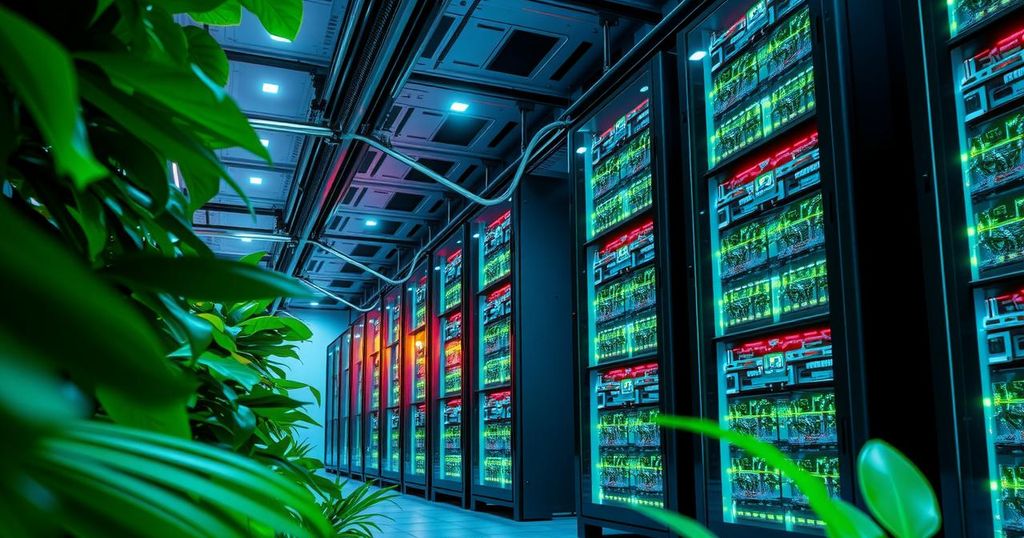Rising Demand for Data Centers: A Double-Edged Sword for Climate Change
Data centers are integral for AI, crypto, and remote work but their rising energy demands pose threats to climate goals. Experts project that by 2026, data centers could consume 6% of U.S. electricity, driven by AI’s skyrocketing energy needs. Efforts to integrate renewable energy into data centers will be vital for sustainable growth as the sector continues to expand.
Data centers are becoming the backbone of modern technology, primarily fueling trends like artificial intelligence (AI), cryptocurrency, and remote work. As the demand for these processing power hubs continues to escalate, experts warn that their energy usage, which spans enormous complexes of around 100,000 square feet, may hinder efforts to curb carbon emissions and combat climate change.
In 2022, around 2,700 U.S. data centers consumed over 4% of the nation’s electricity, and this figure is projected to rise to 6% by 2026, driven largely by the growing adoption of AI and crypto technologies. AI’s energy consumption alone is expected to swell tenfold compared to 2023, highlighting a concerning trend in energy demand.
Nvidia, a key player in the AI space, saw its revenue soar by 265% over three months, emphasizing the significant energy implications of its growth. Arman Shehabi from Lawrence Berkeley National Laboratory raised concerns about Nvidia’s anticipated energy usage increase if they maintain their growth trajectory. However, a Nvidia spokesperson claimed their products could lead to lower energy consumption in data centers through GPU-accelerated computing, stating the potential reduction in conventional server use.
On the cryptocurrency front, it accounted for about 0.4% of global energy consumption in 2022, mirroring the energy footprint of countries like the Netherlands, largely due to the energy-intensive process of crypto mining. The shift towards remote work surges during the pandemic spiked data center demand by up to 35%. Although some demand has stabilized, hybrid work arrangements have kept usage persistently higher than pre-pandemic levels.
According to the U.S. Environmental Protection Agency, the electric power sector represented nearly a quarter of U.S. carbon emissions in 2022, making it a leading contributor alongside transportation. Furthermore, the information technology sector, with data centers included, contributes about 3% of global carbon emissions.
Efforts are underway to enhance the sustainability of data centers by linking them to renewable energy sources. As the demand for these centers continues to rise, they will serve as a critical test case for balancing increased electricity usage with climate impacts, setting a precedent for sustainable growth in various economic sectors in the decades to come.
In summary, data centers, while crucial for supporting technologies like AI and cryptocurrency, face a significant challenge in balancing energy consumption and sustainability. With projections for increasing electricity usage, experts emphasize the importance of transitioning to renewable energy sources and innovative solutions. The future of data centers will be pivotal in determining how technology can evolve without exacerbating climate change.
Original Source: abcnews.go.com




Post Comment